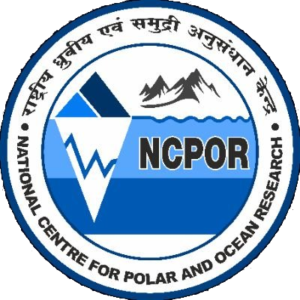 ISEA is a multi-disciplinary, multi-institutional program conducted every year by the Union Ministry of Earth Sciences, started in 1981. It has gained global acceptance after India signed Antarctic Treaty.
ISEA is a multi-disciplinary, multi-institutional program conducted every year by the Union Ministry of Earth Sciences, started in 1981. It has gained global acceptance after India signed Antarctic Treaty.
Subsequently, India had constructed Dakshin Gangotri Antarctic research Base (WAP IND-Ø1) in 1983. It was superseded by the Maitri Base (WAP IND-Ø3) from 1990,
The newest base Bharati (WAP IND-Ø4), is the last one of the India Research Programs in Antarctica; The Larsemann Hills component of XXX Indian Antarctic Expedition, season 2010-11 led by Mr. Rajesh Asthana, a geologist from Geological Survey of India, reached 160m close to the landing site o f Bharti Promontory.
f Bharti Promontory.
Ice Breaker, I/B Vladimir Ignatyuck and the main expedition vessel were deployed during that season; on the year 2011-12 the Station has been completed and commissioned to carry out scientific activities involving various disciplines like, Earth Science, Biological Science, Atmospheric Science, Engineering and Medicine.
The first Ham Radio contact with Bharati Station was made on 27 Aug. 2012 and the operator was Bhagwati Prasad signing VU3BPZ/P
On Nov 27, 2018, the Launching ceremony of XXXVIII Indian Scientific Expedition to Antarctica (ISEA) and Briefing lectures to the Fourth Batch of members has been held at Seminar Hall, NCPOR. Dr Rajesh Asthana, Deputy Di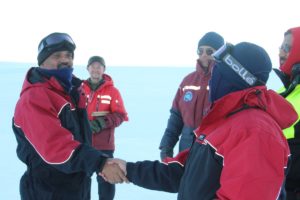 rector
rector 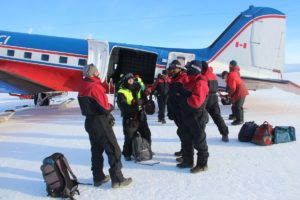 General, GSI and Veteran Antarctican was guest speaker together with Dr. M. Ravichandran, Director NCPOR; Shri M. Javed Beg and Dr. Thamban Meloth, Dr. K.P. Krishnan, Dr. Mahesh B.S. along with the members of fourth batch of expeditionners ready to head down South!
General, GSI and Veteran Antarctican was guest speaker together with Dr. M. Ravichandran, Director NCPOR; Shri M. Javed Beg and Dr. Thamban Meloth, Dr. K.P. Krishnan, Dr. Mahesh B.S. along with the members of fourth batch of expeditionners ready to head down South!
Mr. P Elango (pic to the right) is the 38th ISEA Leader at Bharati Station WAP IND-Ø4), Antarctica, but as far as we know, no Ham radio operators are among the personnel down there!

 A great Antarctic Philatelic exhibition named “Icy Continent & Indian Expeditions ‘ Exploring Antarctica” curated by Abhay Mishra at Valley of Words , International Literature & Art Festival, Dehra Dun. Venue – Hotel Madhuban, Blue Star Gallery (India), has just ended on last 25th Nov 2018.
A great Antarctic Philatelic exhibition named “Icy Continent & Indian Expeditions ‘ Exploring Antarctica” curated by Abhay Mishra at Valley of Words , International Literature & Art Festival, Dehra Dun. Venue – Hotel Madhuban, Blue Star Gallery (India), has just ended on last 25th Nov 2018. Uttarakhand. He has authored a book titled “Uttarakhand – A philatelic Journey”, published by Department of Post, Uttarakhand Circle. He has been to Antarctica with the XXI Indian Scientific Expedition as a communication officer. Professionally he is a scientist with Defence Research and Development Organization. (Pic aside shows Abhay Mishra & Dr. G.S Shirohi, Ph.D Delhi University)
Uttarakhand. He has authored a book titled “Uttarakhand – A philatelic Journey”, published by Department of Post, Uttarakhand Circle. He has been to Antarctica with the XXI Indian Scientific Expedition as a communication officer. Professionally he is a scientist with Defence Research and Development Organization. (Pic aside shows Abhay Mishra & Dr. G.S Shirohi, Ph.D Delhi University) India’s involvement with Antarctic Expeditions, dates back to circa 1911.
India’s involvement with Antarctic Expeditions, dates back to circa 1911.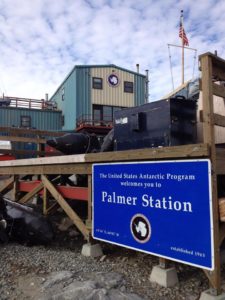 Originally built by U.S. Navy Seabees in 1967, Palmer Station (WAP USA-23) is located at 64°46′ S, 64°03′ W on Anvers Island, near the tip of the Antarctic Peninsula; it is named for Nathaniel B. Palmer, a Connecticut sealer who, on 17 November 1820, during an exploratory voyage ranging southward from the South Shetland Islands, may have been the first person to see Antarctica. (British and Russian ships were in the area at about the same time.)
Originally built by U.S. Navy Seabees in 1967, Palmer Station (WAP USA-23) is located at 64°46′ S, 64°03′ W on Anvers Island, near the tip of the Antarctic Peninsula; it is named for Nathaniel B. Palmer, a Connecticut sealer who, on 17 November 1820, during an exploratory voyage ranging southward from the South Shetland Islands, may have been the first person to see Antarctica. (British and Russian ships were in the area at about the same time.)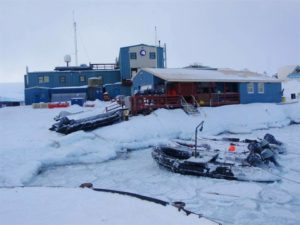
 A rendering of the proposed redevelopment and consolidation of buildings at McMurdo Station. This conceptual drawing is subject to revision prior to final design. (Image Credit: Leidos)
A rendering of the proposed redevelopment and consolidation of buildings at McMurdo Station. This conceptual drawing is subject to revision prior to final design. (Image Credit: Leidos) o being able to redevelop McMurdo into an energy and operationally efficient platform from which to launch world-class Antarctic science.
o being able to redevelop McMurdo into an energy and operationally efficient platform from which to launch world-class Antarctic science.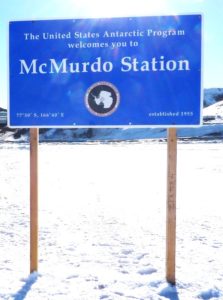
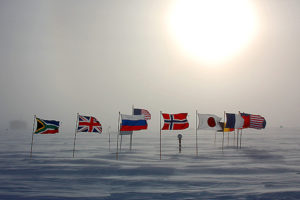
 Treaties and signatories
Treaties and signatories The South Pole overland Traverse, or SPoT, left McMurdo Station (WAP USA-22) on Antarctica’s Ross Island on Nov. 12, to begin a trek of more 1,000 miles across the Antarctic Plateau to NSF’s Amundsen-Scott South Pole Station (WAP USA-36).
The South Pole overland Traverse, or SPoT, left McMurdo Station (WAP USA-22) on Antarctica’s Ross Island on Nov. 12, to begin a trek of more 1,000 miles across the Antarctic Plateau to NSF’s Amundsen-Scott South Pole Station (WAP USA-36). 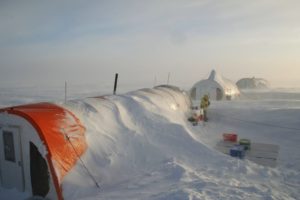 Law Dome was roughly mapped by the United States Feological Survey from aerial photographs taken by U.S. Navy (Operation Highjump) in the year 1946–47, and has been the subject of intensive glaciological and geophysical surveys by Australia National Antarctic Research Expedition between 1962 and 1965. It was named by the “Antarctic Names Committee of Australia” for Phillip Law, Director of the Australian Antarctic Division from 1949 to 1966.
Law Dome was roughly mapped by the United States Feological Survey from aerial photographs taken by U.S. Navy (Operation Highjump) in the year 1946–47, and has been the subject of intensive glaciological and geophysical surveys by Australia National Antarctic Research Expedition between 1962 and 1965. It was named by the “Antarctic Names Committee of Australia” for Phillip Law, Director of the Australian Antarctic Division from 1949 to 1966.
 The scientific expedition ship Akademik Fedorov has just departed from St. Petersburg to the shores of the Antarctic. This will be the 43rd expeditionary flight of the flagship of the Russian polar fleet. The ship’s captain is Oleg Kalmykov Kalmykov, the head of the seasonal expedition is Mikhail Viktorovich Bugayov.
The scientific expedition ship Akademik Fedorov has just departed from St. Petersburg to the shores of the Antarctic. This will be the 43rd expeditionary flight of the flagship of the Russian polar fleet. The ship’s captain is Oleg Kalmykov Kalmykov, the head of the seasonal expedition is Mikhail Viktorovich Bugayov.
 RUS-Ø8), Novolazarevskaya (WAP RUS-Ø9), Bellingsgausen (WAP RUS-Ø1), Montevideo – Bremerhaven – St. Petersburg. At this stage, the vessel will supply and replace the wintering team at Novolazarevskaya and Bellingshausen stations, as well as complete seasonal operations at these stations and seasonal bases Molodezhnaya and Vechernyaya Mountain (WAP BLR-NEW). At the exit from the Antarctic, the vessel will conduct marine research in the Bransfield and Drake Straits. The return of the “Akademik Fedorov” to the home port is planned for June 2, 2019.
RUS-Ø8), Novolazarevskaya (WAP RUS-Ø9), Bellingsgausen (WAP RUS-Ø1), Montevideo – Bremerhaven – St. Petersburg. At this stage, the vessel will supply and replace the wintering team at Novolazarevskaya and Bellingshausen stations, as well as complete seasonal operations at these stations and seasonal bases Molodezhnaya and Vechernyaya Mountain (WAP BLR-NEW). At the exit from the Antarctic, the vessel will conduct marine research in the Bransfield and Drake Straits. The return of the “Akademik Fedorov” to the home port is planned for June 2, 2019. Pic aside show the Chilean Navy Base , Arturo Prat (WAP CHL-Ø1).
Pic aside show the Chilean Navy Base , Arturo Prat (WAP CHL-Ø1).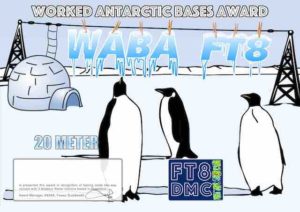 n recognition of international two-way FT8 amateur radio communication, the FT8 Digital Mode Club (FT8-DMC) issues Worked Antarctic Bases Award certificates to amateur radio stations worldwide. Qualification for the FT8 WABA award is based on an examination by the FT8 WABA Award Manager, from QSOs that the applicant has made with minimum 3 different amateur radio stations from Antarctica . All contacts must be made from the same country. Band endorsements for 6, 10, 12, 15, 17, 20, 30, 40, 80 and 160m available.
n recognition of international two-way FT8 amateur radio communication, the FT8 Digital Mode Club (FT8-DMC) issues Worked Antarctic Bases Award certificates to amateur radio stations worldwide. Qualification for the FT8 WABA award is based on an examination by the FT8 WABA Award Manager, from QSOs that the applicant has made with minimum 3 different amateur radio stations from Antarctica . All contacts must be made from the same country. Band endorsements for 6, 10, 12, 15, 17, 20, 30, 40, 80 and 160m available.
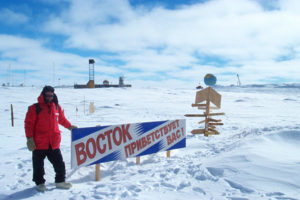 Alexander, RX0QM, ex.RI59ANT & RI1ANB (2017) is actually operating from Vostok Station (WAP RUS-13), in Antarctica. He is not very active but, being there till January 2019, there are good chances to work him.
Alexander, RX0QM, ex.RI59ANT & RI1ANB (2017) is actually operating from Vostok Station (WAP RUS-13), in Antarctica. He is not very active but, being there till January 2019, there are good chances to work him.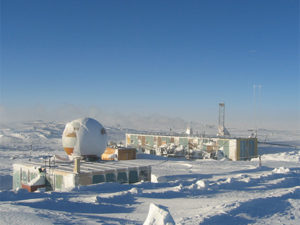 it remains one of Russia’s major base stations, with people living there year-round.
it remains one of Russia’s major base stations, with people living there year-round.